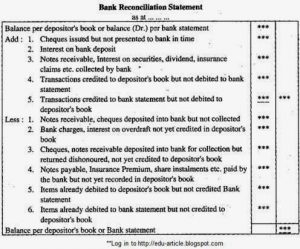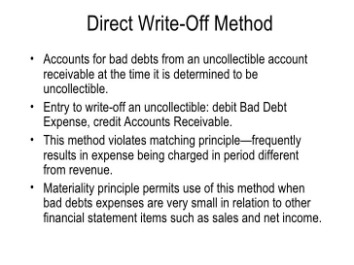
One of these accounts must be debited and the other credited, both with equal amounts. Essentially, the representation equates all uses of capital (assets) to all sources of capital (where debt capital leads to liabilities and equity capital leads to shareholders’ equity). For a company to keep accurate accounts, every single business transaction will be represented in at least two of the accounts. Bookkeeping and accounting are ways of measuring, recording, and communicating a firm’s financial information. A business transaction is an economic event that is recorded for accounting/bookkeeping purposes. In general terms, it is a business interaction between economic entities, such as customers and businesses or vendors and businesses.

Account types
- This is always the case except for when a business transaction only affects one side of the accounting equation.
- If the fleet owner would have bought the trucks in cash, then a credit entry has to be made in cash account and a debit entry to the inventory account.
- It’s often a favorite for larger businesses or those who have a lot more financial movement.
- In single-entry accounting, when a business completes a transaction, it records that transaction in only one account.
- This complexity can be time-consuming as well as more costly; however, in the long run, it is more beneficial to a company than single-entry accounting.
- “It was just a whole revolution in the way of thinking about business and trade,” writes Jane Gleeson-White of the popularization of double-entry accounting in her book Double Entry.
With a double-entry system, credits are offset by debits in a general ledger or T-account. It is not possible to keep accounts in this manner for those who do not have a thorough understanding of accounting principles. Because it is a complex accounting system that requires proper knowledge. It is mandatory in a double-entry accounting system to keep separate books of accounts for the accounts by categorizing them according to the nature of the transaction.
What are the benefits of CRM?
The Double Entry System is well-established and well-known throughout the world as a dependable, scientific, and comprehensive system for keeping business accounts. You’ll also learn about the fundamental principles or characteristics of double-entry accounting, as well as the advantages and disadvantages how to use financial reports to calculate return on assets of using it. Meanwhile, the single-entry system is an easier pick for folks craving simplicity. But it makes life much easier for smaller entities needing a quick and hassle-free way to balance the books. The double-entry system is widely accepted and complies with international accounting standards.
Keep Learning: CRM Resources
The amount of a long-term asset’s cost that has been allocated to Depreciation Expense since the time that the asset was acquired. Accumulated Depreciation is a long-term contra asset account (an asset account with a credit balance) that is reported on the balance sheet under the heading Property, Plant, and Equipment. Remember that example where you bought $5,000 of equipment for your business? Using double-entry accounting, with just a glance at your trial balance, you and your tax preparer would see a missing $5,000 in either the debit column or credit column.
What is the approximate value of your cash savings and other investments?
This statement shows how Direct Delivery’s cash amount has changed during the time interval shown in the heading of the statement. Joe will be able to see at a glance the cash generated and used by his company’s operating activities, its investing activities, and its financing activities. Much of the information on this financial statement will come from Direct Delivery’s balance sheets and income statements.

Now, you can look back and see that the bank loan created $20,000 in liabilities. Money flowing through your business has a clear source and destination. It is not used in daybooks (journals), which normally do not form part of the nominal ledger system. The double-entry system began to propagate for practice in Italian merchant cities during the 14th century.
After all, your bank statement is credited when money is paid into your bank account. This system of accounting is named the double-entry system because every transaction has two aspects, both of which are recorded. This practice ensures that the accounting equation always remains balanced; that is, the left side value of the equation will always match the right side value. The accounting and book-keeping is a continuous process of tracking changes in each account as the company continues to do its operations. It is critical to have both theoretical and practical knowledge of accounting principles in order to preserve accounts in this manner.
In this alternate approach, each transaction affects only one account. It’s similar to maintaining a checkbook register, where you record events in a sequential fashion. Marilyn asks Joe if he can see that the balance sheet is just that—in balance. Joe looks at the total of $20,000 on the https://www.adprun.net/ asset side, and looks at the $20,000 on the right side, and says yes, of course, he can see that it is indeed in balance. T accounts can give you a visual understanding of the double-entry accounting system. This single-entry bookkeeping is a simple way of showing the flow of one account.
If all that information gets stored in handwritten notes, laptops, or inside the heads of your salespeople, there can be serious cost implications. Details can get lost, action items aren’t followed up on promptly, and customers get prioritized based on guesswork rather than data. And if someone leaves the company, unless their contacts and notes are saved in a CRM, that information — and business — may disappear along with them. No matter your industry, or even if you’re a non-profit, if you communicate with customers — and your employees rely on information about those customers — CRM tools can help.
The double-entry accounting method has many advantages over the single-entry accounting method. First and foremost is that it provides an organization with a complete understanding of its financial profile by noting how a transaction affects both credit and debit accounts. It also makes spotting errors easier, because if debits and credits do not match, then something is wrong. Double-entry bookkeeping is an accounting method where each transaction is recorded in 2 or more accounts using debits and credits.

The Double Entry System is the procedure for correctly recording dual entity transactions in order to prepare accounts correctly. The primary difference between single-entry and double-entry accounting is the number of accounts each transaction affects. In single-entry accounting, each transaction involves only one account. But in double-entry accounting, each transaction affects two accounts out of multiple.
Credits to one account must equal debits to another to keep the equation in balance. Accountants use debit and credit entries to record transactions to each account, and each of the accounts in this equation show on a company’s balance sheet. Double-entry bookkeeping creates a “mirror image” of both sides of each financial transaction, allowing you to compare one column of credits against a column of debits and easily spot any discrepancies. Single-entry bookkeeping doesn’t allow for this type of verification. Although single-entry bookkeeping is simpler, it’s not as reliable as double-entry and isn’t a suitable accounting method for medium to large businesses.
This is a fundamental and implicit consequence of the double-entry system of accounting, and there are no exceptions. One account gives the benefit and one account receives the benefit. A long time ago, most people did it this way, with debit on the left and credit on the right. The double-entry system of accounting was first introduced by an Italian mathematician, Fra Luca Pacioli, in 1544 in Venice.
Under the accrual basis of accounting, the Service Revenues account reports the fees earned by a company during the time period indicated in the heading of the income statement. Service Revenues include work completed whether https://www.business-accounting.net/outsourced-accounting-ways-outsourced-accounting/ or not it was billed. Service Revenues is an operating revenue account and will appear at the beginning of the company’s income statement. Even if you don’t have an accountant or bookkeeper now, you may at some point.
My Accounting Course is a world-class educational resource developed by experts to simplify accounting, finance, & investment analysis topics, so students and professionals can learn and propel their careers. Shaun Conrad is a Certified Public Accountant and CPA exam expert with a passion for teaching. After almost a decade of experience in public accounting, he created MyAccountingCourse.com to help people learn accounting & finance, pass the CPA exam, and start their career. Each adjustment to an account is denoted as either a 1) debit or 2) credit. A financial forecast tries to predict what your business will look like (financially) in the future—which is key for uncertain, economic times. If you want your business to be taken seriously—by investors, banks, potential buyers—you should be using double-entry.